Continuing my exploration of the many rail trails in the Greater East Dodgeville Area, I rode the Lindsay-Bethany trail last month. The trail runs southeast from Lindsay to Bethany and is the southernmost section of the Victoria Rail Trail, which runs all the way up to Haliburton. Like most trails in the area, the surface is highly variable, sometimes changing between loose gravel, sand, mud, grass, and crushed gravel all in the course of a few hundred metres. At the very southern end past Bethany, a portion of the trail has perfectly spaced and sized depressions; it feels like riding a mini pump track and is way more fun than you’d expect riding on a straight rail trail would be. Most of the trail is hard-packed double track that’s easy enough to ride on, but you do have to be ready for the occasional potholes and surface changes that come with a trail that isn’t quite up to Trans Canada Trail standards like the Omemee and Hastings trails are. I seem to say this of a lot of trails, but I wouldn’t recommend it for hybrids or road bikes. It’s quite acceptable on a decent mountain bike, with or without front suspension. Of all the trails I’ve been on recently, it’s also the most heavily used by ATVs: I encountered close to a dozen of them in the first few kilometres riding out of Lindsay on a sunny Sunday afternoon, though there were none on the last half of the trail to Bethany.
One thing does set the Bethany trail apart from all of the other trails I’ve been on recently: it feels very isolated. While most other trails pass behind backyards and farm fields, the Bethany trail spends a lot of time skirting large wetlands and valley forests while the Pigeon River and Fleetwood Creek meander back and forth with no farm fields or houses anywhere in sight. Even road crossings become rare on the southern half of the trail, making the whole experience feel more wild and natural than other trails, even knowing that the farms and quarries are still there, just a little out of sight.
Another rare sight is clearly visible at every intersection where the trail crosses a road: signs! No, not the stop signs, but honest-to-goodness street signs. It’s the first trail I’ve been on where every intersection is marked so that you don’t have to guess which road you’re crossing. It’s a wonder that more trails don’t have this simple nod to the fact that people may want to know where they are.
Read on for the ride gallery.
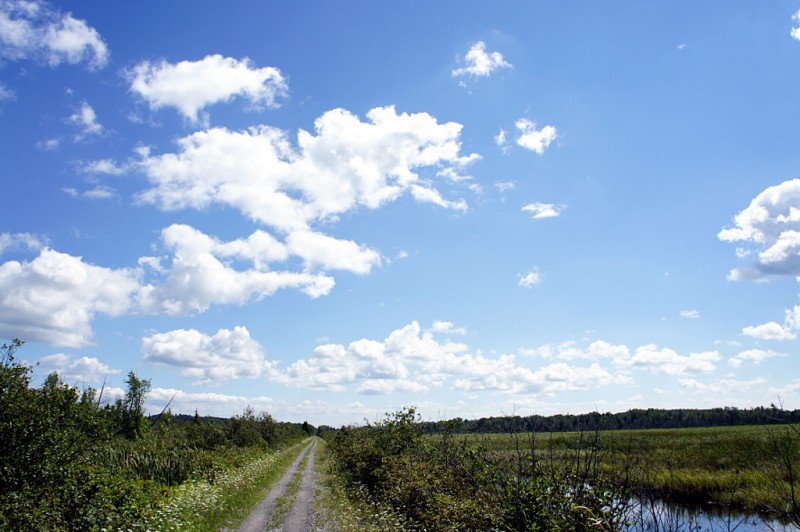
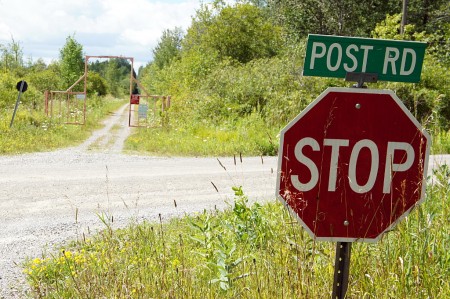
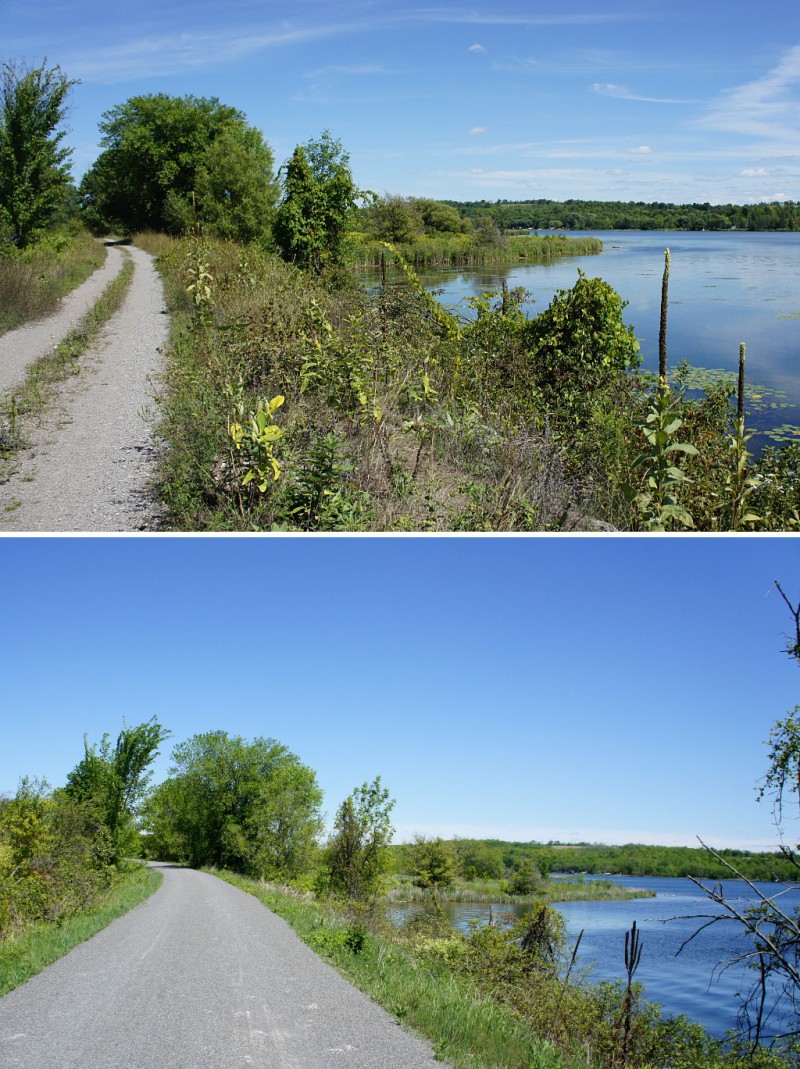
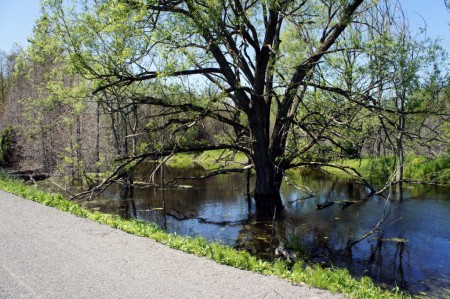
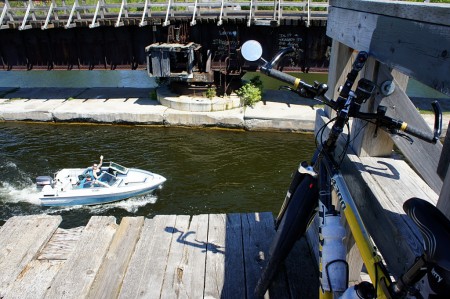
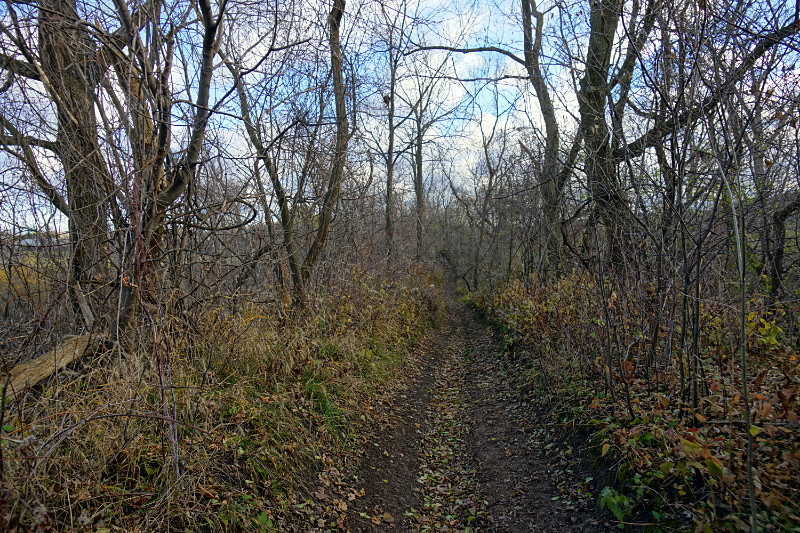
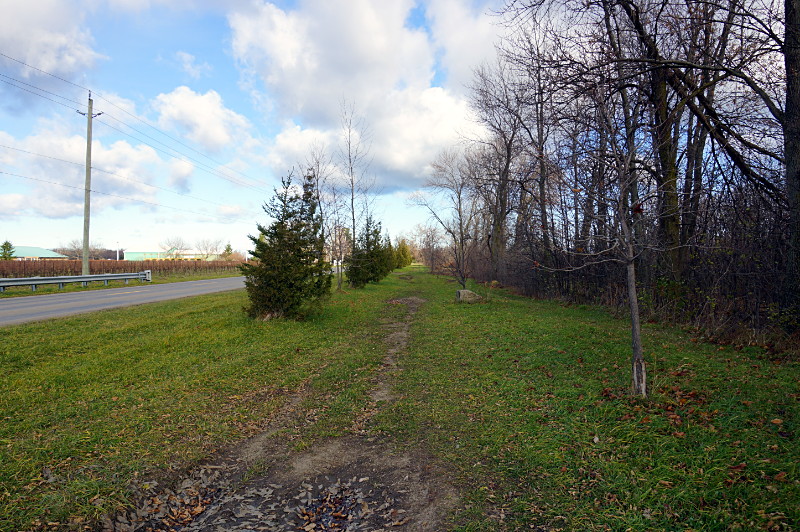
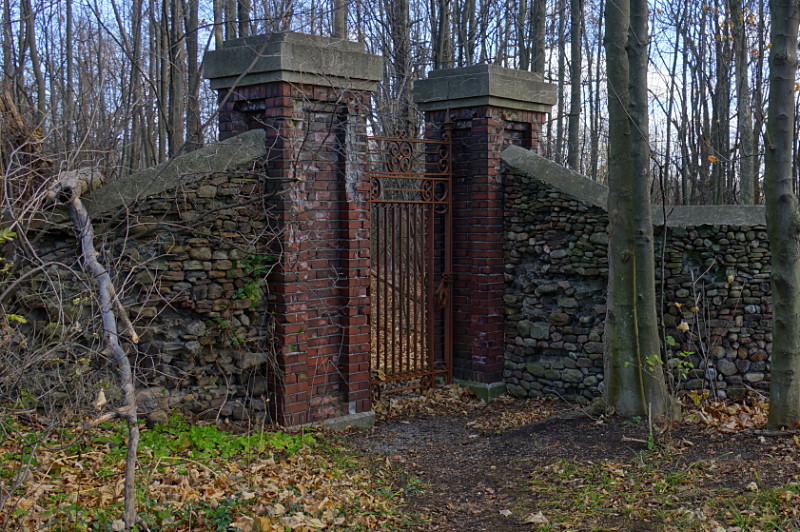
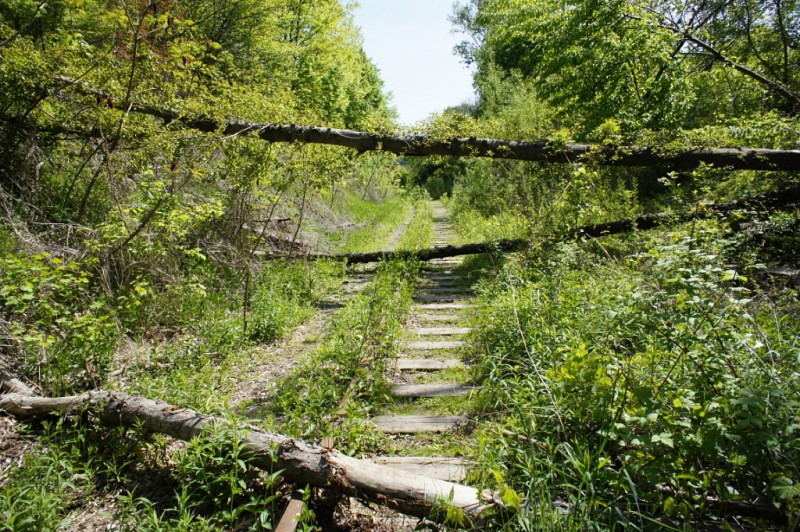

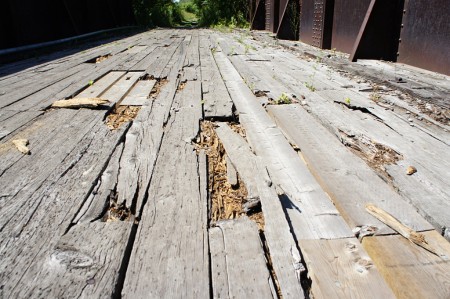 Compared to the Peterborough to Omemee trail, the lack of coordination shows: the route to Hastings is a little more wild and a bit more of a challenging ride. Unlike the smooth wide bed of gravel dust on the Omemee trail, the ride to Hastings is mostly on dirt double-track with some large gravel, loose sand, and other trail hazards along the way. Some of the bridges seemed to be in rough shape, with some surface planks rotting away and exposing holes big enough to see through to the rivers below. The trail is probably smooth as butter when it’s covered with a couple of feet of hard packed snow but it can be a little jarring on a bike in the summer. It’s certainly in good enough condition and offers enough variation for an average cyclist to have an enjoyable trip, but you won’t find any beach cruisers on it. Front suspension on my mountain bike was most welcome by the halfway mark.
Compared to the Peterborough to Omemee trail, the lack of coordination shows: the route to Hastings is a little more wild and a bit more of a challenging ride. Unlike the smooth wide bed of gravel dust on the Omemee trail, the ride to Hastings is mostly on dirt double-track with some large gravel, loose sand, and other trail hazards along the way. Some of the bridges seemed to be in rough shape, with some surface planks rotting away and exposing holes big enough to see through to the rivers below. The trail is probably smooth as butter when it’s covered with a couple of feet of hard packed snow but it can be a little jarring on a bike in the summer. It’s certainly in good enough condition and offers enough variation for an average cyclist to have an enjoyable trip, but you won’t find any beach cruisers on it. Front suspension on my mountain bike was most welcome by the halfway mark.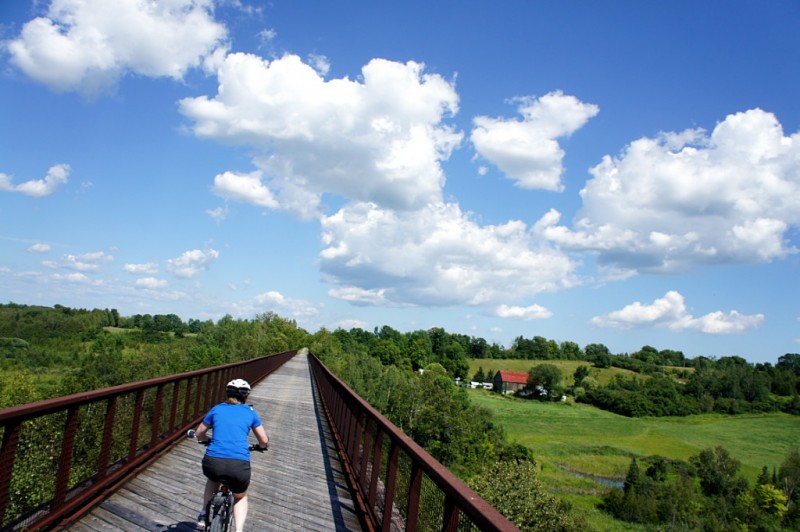
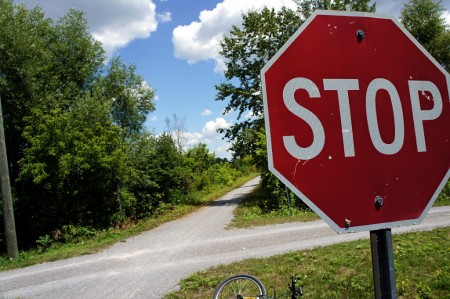 The trail is an easy and relaxing ride for the entire length. It passes a few rural intersections and driveways at grade, while busy Highway 7 and some other driveways are carried over the trail on bridges. The urban intersections in Peterborough are similar to the ones on Toronto’s Beltline, but have curb cuts to actually let cyclists cross at the trail. The trail itself is well-maintained and can be ridden by the most casual of cyclists. Along the way you are treated to views of farms, valleys, and the rolling hills that you are not constantly climbing up and down. That’s the real joy of rail trails: you may be climbing, but the grade is so slight that it doesn’t hurt when you’re going up and it’s like having a slight tailbreeze when you’re going down.
The trail is an easy and relaxing ride for the entire length. It passes a few rural intersections and driveways at grade, while busy Highway 7 and some other driveways are carried over the trail on bridges. The urban intersections in Peterborough are similar to the ones on Toronto’s Beltline, but have curb cuts to actually let cyclists cross at the trail. The trail itself is well-maintained and can be ridden by the most casual of cyclists. Along the way you are treated to views of farms, valleys, and the rolling hills that you are not constantly climbing up and down. That’s the real joy of rail trails: you may be climbing, but the grade is so slight that it doesn’t hurt when you’re going up and it’s like having a slight tailbreeze when you’re going down.